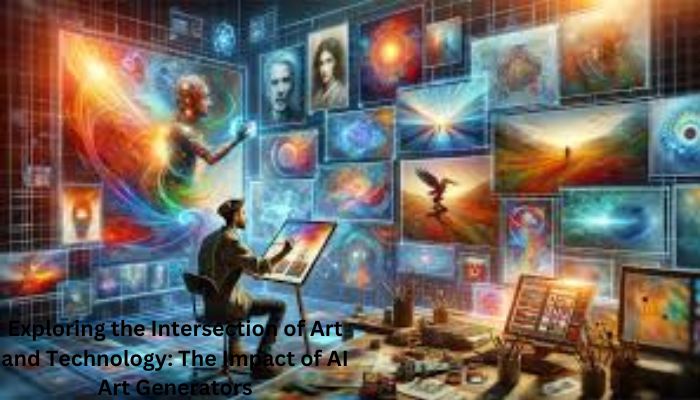Integrating art and AI has revolutionized the creative landscape, with AI generators being the core. These sophisticated tools, equipped with intricate algorithms, produce artwork autonomously. Electronic devices, particularly those capable of removing background images, have the potential to unlock new creative horizons, democratizing art and expanding access to creative expression.
What is an AI Art Generator?
AI Art Generators are software platforms that use artificial intelligence to create original artwork based on user input. These tools can transform prompts into intricate paintings, abstract designs, or realistic renditions, allowing for unprecedented artistic expressions. Some platforms cater to specific styles or mediums, while others offer a versatile range, catering to various artistic preferences, such as photorealistic portraits, surreal landscapes, or whimsical pixel art.
Free AI Art Generators’ History
Free AI art generators have roots in computational creativity, with early experiments by Harold Cohen in the 1960s. Advances in deep learning and neural networks have made the field more advanced. Algorithms like GANs and VAEs have emerged as pioneers in free AI art generation, allowing machines to learn and replicate artistic styles with precision and creativity.
Democratizing Creativity through the Power of Free AI Generators
Free AI generators democratize creativity by making art accessible to all. They offer a user-friendly interface, allowing individuals of all backgrounds to unleash their creativity. These tools produce visually captivating compositions using neural networks to analyze image content and apply various artistic styles. Advanced background remover capabilities further simplify the image manipulation and composition process, lowering the entry barrier.
Transforming Visual Storytelling: The Effect of AI-powered Free Art Generators
This free tool revolutionizes visual storytelling by transforming static images into dynamic transitions and erasing the background. It uses artificial intelligence to transcend traditional advertising boundaries, explore new narrative concepts, and engage audiences with the experience of seeing and feeling. It evokes the essence of famous artists and takes viewers to new dimensions.
Investigating the intersection of technology and art to make ethical decisions and issues
The increasing use of AI in art production raises ethical concerns about copyright, ownership, and authenticity. The use of AI in creating images and videos raises social issues of misuse and exploitation, necessitating careful and foresightful responses to ensure the responsible and ethical use of these tools.
The Future of Free AI Generators
The democratization of art through free generators is expected to create a more diverse and inclusive creative landscape. As AI algorithms and computing power improve, these tools will push the boundaries of art and open new areas of creativity. As they become more integrated into daily life, they can empower individuals to express themselves and share their unique perspectives. By embracing these transformative technologies, we can harness the creative potential of free AI art generators to shape a more vibrant, inclusive, and inspiring future for art and creativity.
Challenges and Controversies
AI art creators have gained attention in the art world. Still, they face challenges such as authorship and artistic intent, as AI generates art autonomously, blurring the line between the artist and the machine. Critics argue that AI-generated art may devalue human creativity and craftsmanship, while proponents emphasize the potential for collaboration between humans and machines to enhance creativity. Ethical implications are also a concern, as AI algorithms are trained on vast datasets, which can contain biased or offensive content. AI art creators can perpetuate harmful stereotypes or generate controversial artworks without proper oversight. Artists and developers must be mindful of these ethical considerations and ensure AI-generated art promotes inclusivity and diversity.
Examples of AI Art Generators
Midjourney, DALL-E 2, NightCafe Creator, Artbreeder, and GauGAN2:
- Midjourney: Offers detailed, diverse artwork creation.
- DALL-E 2: Known for photorealistic outputs.
- NightCafe Creator: Offers various artistic styles and creative filters.
- Artbreeder: Explores and hybridizes different styles.
- GauGAN2: Developed by Google AI.
Conclusion
The rise of free AI art generators has revolutionized the creative landscape by allowing individuals of all backgrounds to explore digital artistry. These tools remove barriers to entry and provide intuitive platforms for artistic experimentation, fostering a more inclusive and diverse creative community. However, ethical considerations such as copyright, ownership, and authenticity must be addressed. As AI evolves, it is crucial to address concerns about the potential misuse and manipulation of AI-generated content to safeguard artistic expression integrity and preserve the ethical fabric of the creative landscape. Read More
